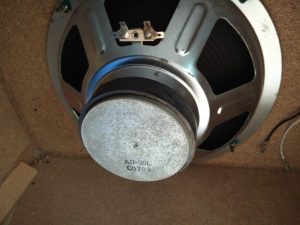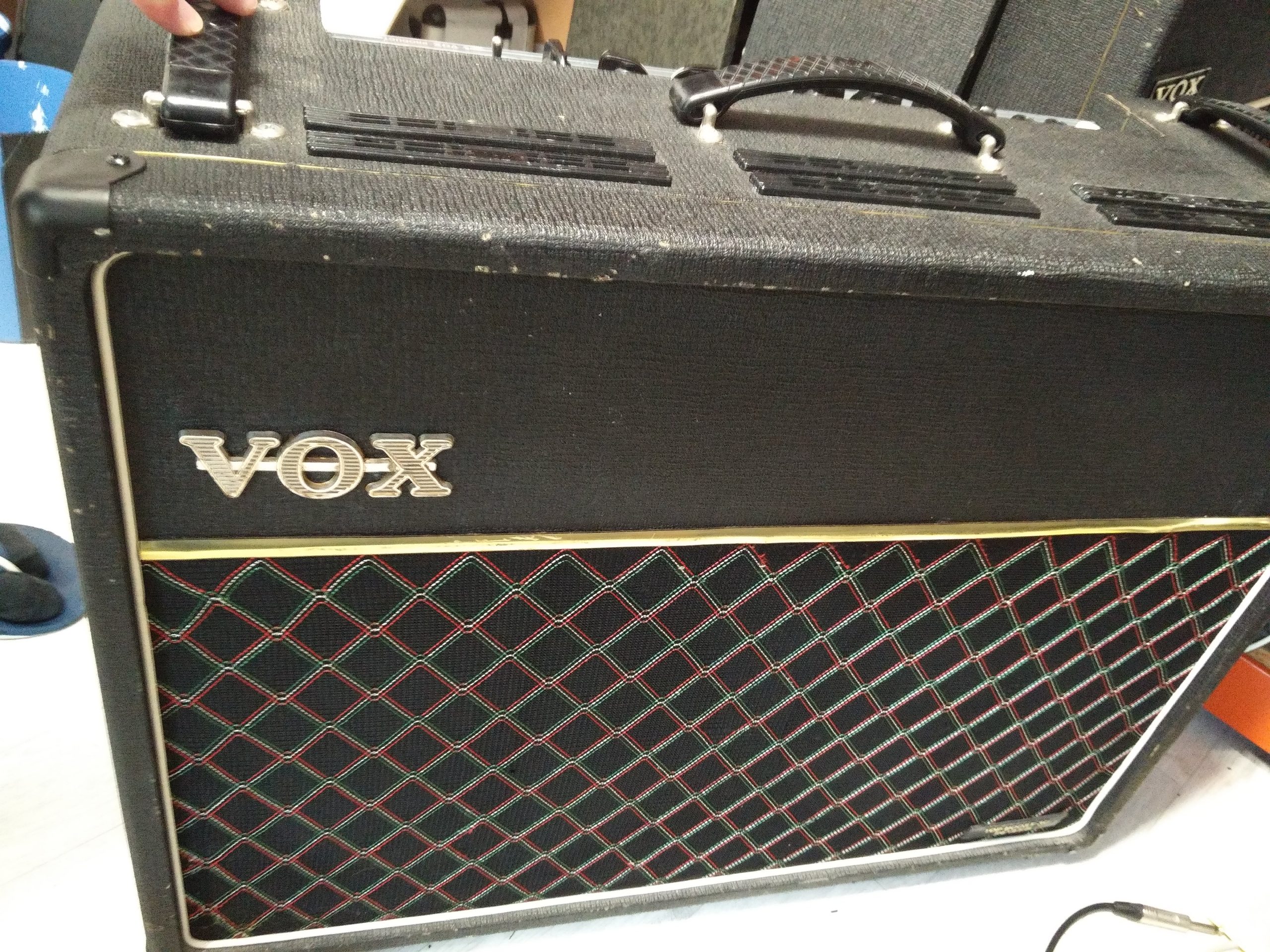Actually, let’s start with a slightly different question…
Are valve amps louder than solid state amps?
Yes, valve amps often are louder than solid state amps. As an example, we could take a Marshall MG30 (30W) and a Vox AC30 (30W) and compare the two. There’s no question at all that the Vox will sound significantly louder to any objective listener. Or take a Fender Blues Junior (15W) and a Fender Frontman 15 (15W). The perceived volume difference is huge.
But hang on, given the price differences in those examples we’re not really comparing apples with apples are we?
How much louder are valve amps than solid state amps? Let’s talk about perceived loudness
It’s often said that a valve amp sounds “twice as loud” as a solid state amp. There’s a whole field of psychoacoustic study to delve into here. For the purposes of this discussion, let’s focus on one psycho acoustic rule of thumb (source).
a power increase of 10dB results in double the perceived volume.
So if we look at the electronic (and electro acoustic) design of valve amps and solid state amps and we can account for 10dB of difference then we can begin to understand why some valve amps are louder than some solid state amps.
Why are valve amps louder than solid state amps?
1. Player demographic.
- This is the biggie.
- Transistor technology is more affordable than the thermionic valve. There’s no doubting that.
- So the cheaper amps are often solid state, the more expensive are often valve.
- Cheaper amps are more likely to be sold to ‘bedroom’ players and children. Someone who’s gigging is more likely to spend more and be able to afford a valve amp.
- The amp development engineers know this, so they design ‘bedroom’ amps to give sensible volume control in a bedroom range. The user can turn the volume dial to about 12 o’clock before the parents complain. They design ‘gigging’ amps to give sensible rehearsal volumes from about 9 o’clock and full on ‘fight the drummer’ volumes at 12 o’clock. This is just sensible design.
- If we were to give this concept an ‘electronicsy’ name, we’d call it the amplifier sensitivity. It could be measured by turning all controls to a certain position (eg. 12 o clock) and determining how much signal we need to put into the input jack in order to get 1W output.
How much difference does this make? As very few manufacturers list AC measurements on their schematics it’s very hard to put a dB figure on this without experimentation, so I’m not going to make one up! I’ll be measuring amps as they come it to try and put a figure on it!
2. Speaker sensitivity (efficiency) – for more info
- See point 1, solid state amps are often used at the price conscious end of the market
- Speakers have a sensitivity, measured in dB/Watt
- Let’s look at some real speakers, chosen at random from Celestion’s range:
- Celestion Vintage 30 – used in mid and high end gear. 100dB/W
- Celestion 70/80 – used in low mid range amps. £500ish. 98dB/W
- Celestion Rocket 50 – used in amps around the £200-350 mark. 95dB/W
- You can’t get manufacturer efficiency data for the guitar speakers used in even cheaper amps, but you can be sure that most will be poorer. Some specs are available for cheap 12in PA woofers such as the MCM 55-2973 at 91dB, roughly 8-10dB lower than comparable high end PA woofers by Fane, Eminence etc.
Already we can see that an amp with a high end speaker has the potential to be 10dB louder than a cheap amp with a low end speaker.

So what happens if we use the same speaker? Read on…
3. Output load rating and power amplifier current/voltage control
- Valve amps use an output transformer. Although its primary purpose is just to match the high impedance valve output with the low impedance speakers, there’s a side benefit – many transformers have tappings to allow a valve amp to match a 4 ohm, 8 ohm or 16 ohm speaker. This means that the amp delivers roughly the same power into any load.
- Very very few solid state amps have an output transformer because they’re not needed – it’s easy to create a low impedance output with transistors.
- So this leads to a scenario in which a solid state amp outputting 15.5Vrms will deliver roughly 60W into 4 ohms, 30W into 8 ohms and 15W into 16 ohms.
- When the engineering department tell the marketing department this, guess which figure the marketing team put on the front of the amp?
- A real world example:
- a Marshall MG100 solid state amp:
- 20Vrms = 100W into a 4 ohm speaker,
- 20Vrms = 50W into an 8 ohm speaker,
- 20Vrms = 25W into a 16 ohm speaker.
- Meanwhile a Marshall DSL100:
- 20Vrms on 4 ohm transformer tap = 100W into a 4 ohm speaker
- 28Vrms on 8 ohm socket = 100W into an 8 ohm speaker,
- 40Vrms on 16 ohm socket = 100W into a 16 ohm speaker.
- a Marshall MG100 solid state amp:
- It is possible to build a voltage drive (with a switch) OR current driven solid state amp that will deliver the same power into different loads. But guess what? It’s more expensive due to the higher voltage rails required, see point 1.
- Depending on the scenario, this can result in between 3dB and 6dB difference in power output between two amps when they’re plugged into the same speaker UNLESS the speaker is 4 ohm
4. Output impedance
- Most solid state amps are voltage controlled (certain era Roland JC, Marshall 80XX series, Fender ultimate chorus and some Trace gear excepted). voltage control results in a low output impedance
- Valve amps with no negative feedback around the transformer have a large amount of current control
- Rod Elliot of ESP (https://sound-au.com/valves/valve-trans.html#s21 ) does a worked example that shows that these differences
As for how much difference this makes, it’s hard to say for certain. Time to experiment, methinks!
5. Valve power amps are designed to distort
- A distorted signal has a higher RMS (up to 1.414 times higher) than a clean waveform. Valve circuits are often more distorted than solid state, even on the ‘clean channel’. However FETs and diodes can be used to distort solid state amplifiers.
- But solid state power amps are often not designed to distort. Why, is it the tone? Well it is true that some solid state amps distort in an unpleasant manner, but many distort quite pleasantly!
- In truth, the primary reason goes back to point one again. Distortion increases the RMS of the voltage signal, which increases the power that the solid state devices must be designed to dissipate, so more money must be spent on heatsinking and cooling them and more money must be spent on providing a power supply that can supply extra the power because…
- Simplifying the maths here, if a clean signal passing into a power amp is fully distorted into a square wave, it will increase the RMS voltage (or current) by about 1.414x.
- So cheap solid state amps (and some cheap valve amps) will normally allow the power to sag significantly when distorting the output stages.
Best case scenario: The described increase in voltage equates to 3dB more power. However, you’ll only actually hear this level difference when the amps are dimed and the power amps are distorting and when comparing a fully distorted valve amp to a totally clean solid state amp. So it’s not a reasonable comparison.
6. Distortion adds harmonics
-
- This is the first one that’s actually related to technological differences between valves and solid state.
- A distorted signal has a higher RMS than a clean waveform. Valve circuits are often more distorted than solid state, even on the ‘clean channel’. However FETs and diodes can be used to distort solid state amplifiers.
- It’s also true that the distortion adds extra frequency content in the most sensitive part of the human ear.
Conclusion
At the start of this article we discussed the claim that valve amps sound twice as loud as solid state amps. We equated this to a 10dB difference in sound level.
- Volume control sensitivity: To be Confirmed by experiment
- Speaker sensitivity: up to 10dB difference
- Output load rating: 0-6dB difference, depending upon the cabinet impedance
- Output impedance: unknown
- Distortion: up to 3dB difference, but only when the amp is dimed.
- Harmonics: unknown.
With various combinations of the factors above, we can easily account for 10dB difference in power and thus a perceived doubling of volume, but what we’ve really seen is that thing that results in valve amps sounding louder than solid state is the target cost price of the unit as it’s designed. If the engineer designing a solid state amp for a pro market were given the same target cost price as the engineer designing a valve amp for a pro market, then a solid state could easily be designed with:
- a sensitive volume control,
- expensive 100dB/W or greater speaker,
- 4x voltage headroom to accommodate different speaker loads
- Current drive to cancel output impedance effects
- Multiple power devices and sufficient heatsinking and a large power supply to allow substantial power amp distortion
And we’d end up with a solid state amp that was as loud as a valve amp. Let’s do this!

